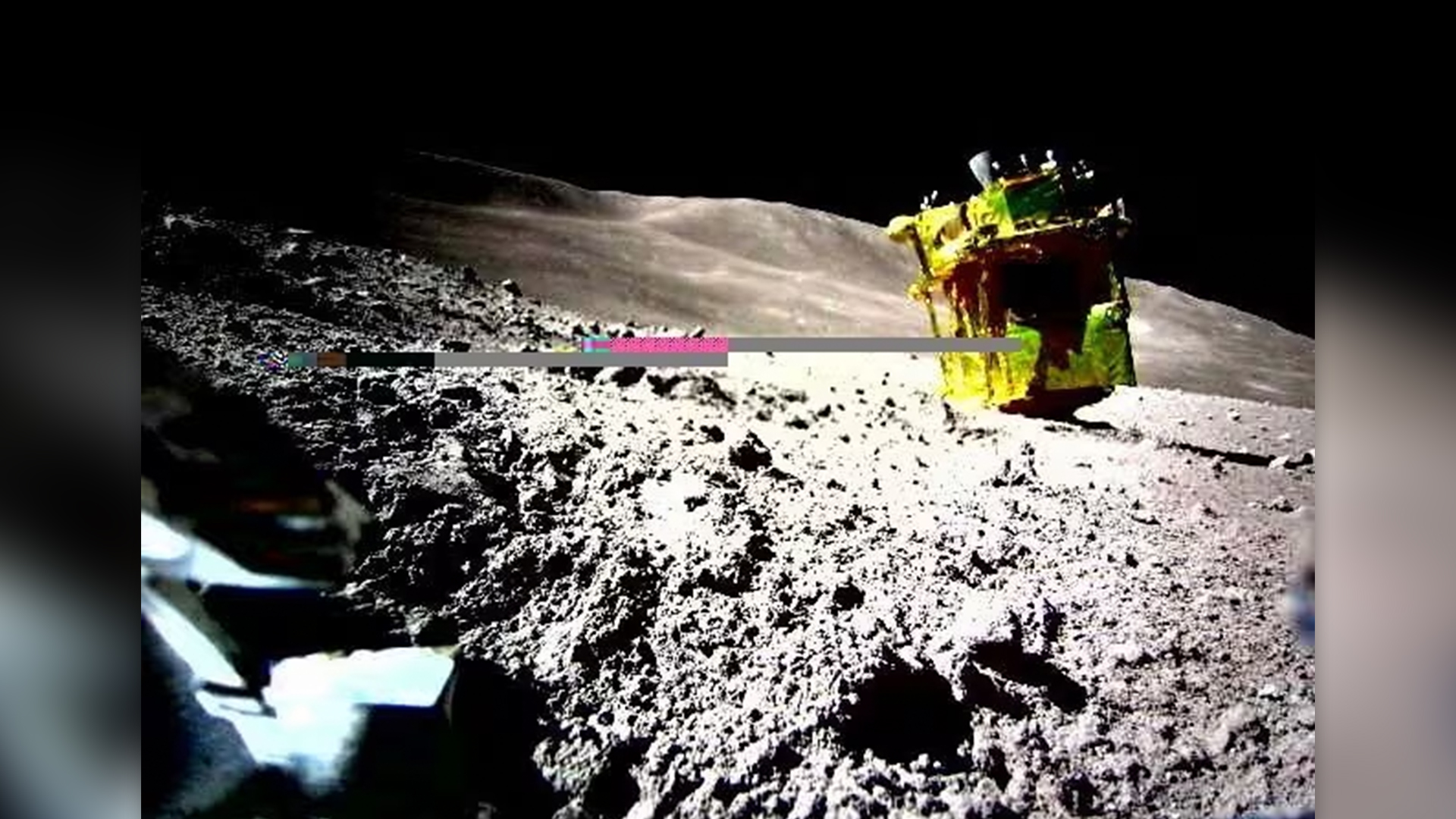Japan's 'Moon Sniper' resurrected nearly 9 days after losing power, thanks to solar charge
The lunar lander's solar panels are now generating power, Japan's space agency says.

Japan has re-established connection with its Smart Lander for Investigating the Moon (SLIM) spacecraft, almost nine days after it touched down on the moon's surface and lost power.
"Communication with SLIM was successfully established last night, and operations resumed!" the Japan Aerospace Exploration Agency (JAXA) posted on X, formerly known as Twitter, on Jan. 28 at around 7:30 p.m. ET.
On Jan. 19, the spacecraft was descending toward its landing spot near the rim of Shioli crater when one of its two main thrusters failed, causing SLIM to topple on its nose. As a result, SLIM's solar panels were initially at the wrong angle and unable to charge, but late on Sunday, the probe started to generate electricity, likely due to a change in the direction of sunlight, Reuters reported.
RELATED: Japan's 'Moon Sniper' lands on lunar surface, but it could be dead within hours
Nicknamed the "Moon Sniper," the spacecraft was designed using a new navigation system that enables precision landings, evidenced by SLIM's impressive accuracy when it touched down within 328 feet (100 meters) of its target despite its technological mishap — making Japan the fifth national space agency to land a spacecraft on the moon. During its descent, SLIM's navigational technology determined its location while cruising by comparing real-time images from its camera to satellite snapshots of the moon.
SLIM will now continue its mission to analyze the composition of olivine rocks — a common mineral in the lunar crust — using a multi-band spectral camera, which captures images beyond the wavelengths of light seen by the human eye. Before the spacecraft initially lost power, JAXA released images taken by the lander's camera of rocks in the surrounding area, then shared a new image of the "toy poodle" rock on the surface of the moon in its tweet last night.
While experts are not yet sure how long SLIM will remain operational, the agency has previously said that SLIM was not designed to survive a lunar night, the next of which begins on Feb. 1.
Get the world’s most fascinating discoveries delivered straight to your inbox.

Kiley Price is a former Live Science staff writer based in New York City. Her work has appeared in National Geographic, Slate, Mongabay and more. She holds a bachelor's degree from Wake Forest University, where she studied biology and journalism, and has a master's degree from New York University's Science, Health and Environmental Reporting Program.
